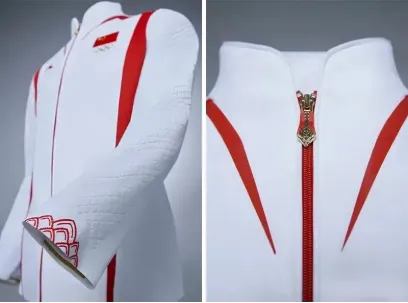
- Afrikaans
- Albanian
- Amharic
- Arabic
- Armenian
- Azerbaijani
- Basque
- Belarusian
- Bengali
- Bosnian
- Bulgarian
- Catalan
- Cebuano
- Corsican
- Croatian
- Czech
- Danish
- Dutch
- English
- Esperanto
- Estonian
- Finnish
- French
- Frisian
- Galician
- Georgian
- German
- Greek
- Gujarati
- haitian_creole
- hausa
- hawaiian
- Hebrew
- Hindi
- Miao
- Hungarian
- Icelandic
- igbo
- Indonesian
- irish
- Italian
- Japanese
- Javanese
- Kannada
- kazakh
- Khmer
- Rwandese
- Korean
- Kurdish
- Kyrgyz
- Lao
- Latin
- Latvian
- Lithuanian
- Luxembourgish
- Macedonian
- Malgashi
- Malay
- Malayalam
- Maltese
- Maori
- Marathi
- Mongolian
- Myanmar
- Nepali
- Norwegian
- Norwegian
- Occitan
- Pashto
- Persian
- Polish
- Portuguese
- Punjabi
- Romanian
- Russian
- Samoan
- scottish-gaelic
- Serbian
- Sesotho
- Shona
- Sindhi
- Sinhala
- Slovak
- Slovenian
- Somali
- Spanish
- Sundanese
- Swahili
- Swedish
- Tagalog
- Tajik
- Tamil
- Tatar
- Telugu
- Thai
- Turkish
- Turkmen
- Ukrainian
- Urdu
- Uighur
- Uzbek
- Vietnamese
- Welsh
- Bantu
- Yiddish
- Yoruba
- Zulu
febr. . 13, 2025 21:31
Back to list
polyester fabric weave
Polyester fabric weave has emerged as a cornerstone in the textile industry, renowned for its versatility, durability, and cost-effectiveness. As polyester continues to dominate both fashion and industrial sectors, understanding the intricacies of its weave is crucial for businesses and consumers aiming to make informed decisions in textile applications.
Beyond aesthetic and tactile qualities, the science behind polyester weave extends to functionality. Polyester’s hydrophobic nature prevents moisture absorption, making it an excellent choice for outdoor and athletic wear. The fabric's weave can be tailored to enhance breathability, add UV protection, or bolster insulation, depending on the intended use. Expertise in selecting the right weave type directly impacts product performance, underscoring the importance of understanding each weave’s characteristics for manufacturers and consumers alike. Polyester fabric weaves also have ecological implications worth noting. While traditional polyester production is often criticized for its environmental impact, the industry is actively evolving. Recycled polyester, created from post-consumer plastic like bottles, reduces waste and conserves resources, offering a more sustainable alternative. Responsible weaving practices and innovations in sustainable polyester production align with the growing consumer demand for eco-friendly products, enhancing a brand’s reputation for sustainability. Trust and authority in the textile market are built upon a sound understanding of material science, consumer needs, and sustainability challenges. As polyester fabric weave continues to evolve, staying informed about the latest developments and weaving technologies enhances trustworthiness and positions businesses as authoritative figures in the market. Navigating the complexities of polyester fabric weave requires an interdisciplinary approach—melding material science expertise with practical experience in production and consumer behavior analysis. Whether you are a manufacturer, fashion designer, or informed consumer, understanding these nuances not only provides a competitive edge but also empowers sustainable decision-making, ultimately shaping the future of textile use in various industries.


Beyond aesthetic and tactile qualities, the science behind polyester weave extends to functionality. Polyester’s hydrophobic nature prevents moisture absorption, making it an excellent choice for outdoor and athletic wear. The fabric's weave can be tailored to enhance breathability, add UV protection, or bolster insulation, depending on the intended use. Expertise in selecting the right weave type directly impacts product performance, underscoring the importance of understanding each weave’s characteristics for manufacturers and consumers alike. Polyester fabric weaves also have ecological implications worth noting. While traditional polyester production is often criticized for its environmental impact, the industry is actively evolving. Recycled polyester, created from post-consumer plastic like bottles, reduces waste and conserves resources, offering a more sustainable alternative. Responsible weaving practices and innovations in sustainable polyester production align with the growing consumer demand for eco-friendly products, enhancing a brand’s reputation for sustainability. Trust and authority in the textile market are built upon a sound understanding of material science, consumer needs, and sustainability challenges. As polyester fabric weave continues to evolve, staying informed about the latest developments and weaving technologies enhances trustworthiness and positions businesses as authoritative figures in the market. Navigating the complexities of polyester fabric weave requires an interdisciplinary approach—melding material science expertise with practical experience in production and consumer behavior analysis. Whether you are a manufacturer, fashion designer, or informed consumer, understanding these nuances not only provides a competitive edge but also empowers sustainable decision-making, ultimately shaping the future of textile use in various industries.
Next:
Latest news
-
The Versatility and Elegance of White Cotton Poplin FabricNewsJun.23,2025
-
The Luxurious Comfort of Carded CottonNewsJun.23,2025
-
Explore the Luxurious Comfort of Cotton Flannel ClothNewsJun.23,2025
-
Discover the Versatility of Cotton Poplin ClothNewsJun.23,2025
-
Bleach Cotton FabricNewsJun.23,2025
-
100 Cotton BlendNewsJun.23,2025
-
Versatile Elegance with Poplin Fabric for SaleNewsMay.15,2025
